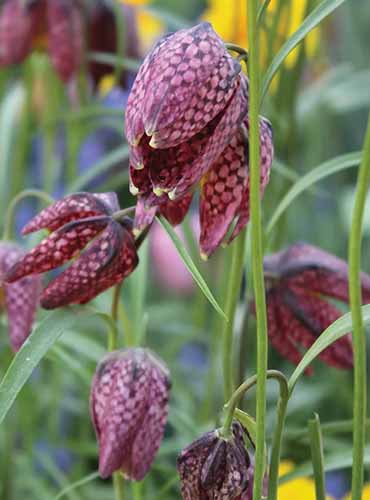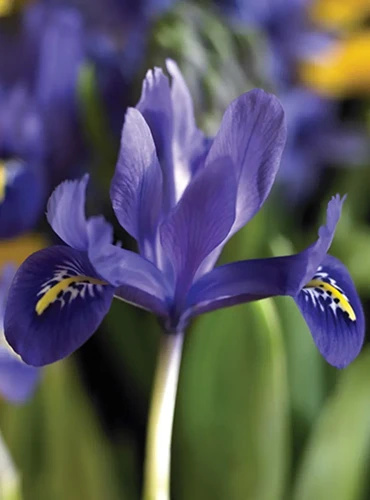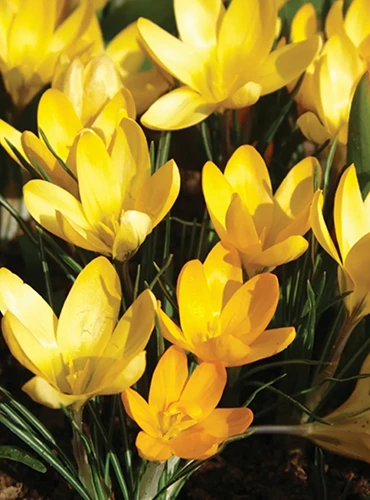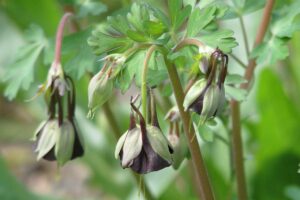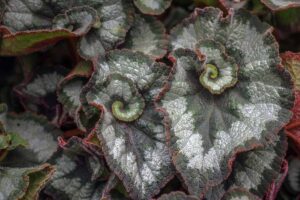Naturalistic landscapes are my favorites. I’m more at home in a wildflower meadow than on a manicured lawn bordered by topiary-pruned boxwoods and well-behaved rose bushes.
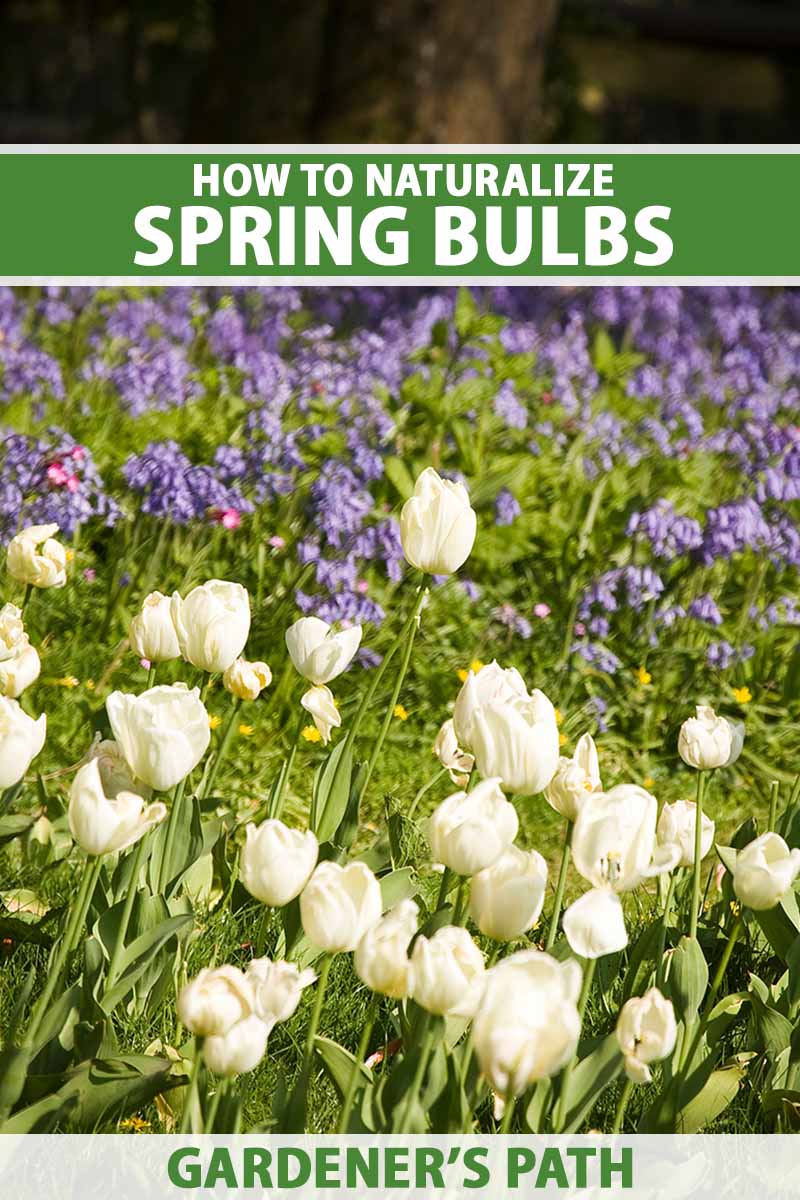
We link to vendors to help you find relevant products. If you buy from one of our links, we may earn a commission.
Give me a woodsy setting with drifts of bluebells and tulips frolicking beneath the trees any day. I like randomness and surprises, as if Mother Nature scattered flowers with reckless abandon.
Instead of fitting plants into beds and borders, this article focuses on naturalizing flowering bulbs to create ever-increasing expanses of seasonal color in the home landscape.
Here’s what we’ll cover:
What You’ll Learn
Ready? Get your garden planner out, because we’re about to begin!
The Naturalistic Landscape
When spring comes to a naturalistic setting, yellow winter aconite covers streambeds and works its way up hillsides, with nodding snowdrops pushing up alongside them.
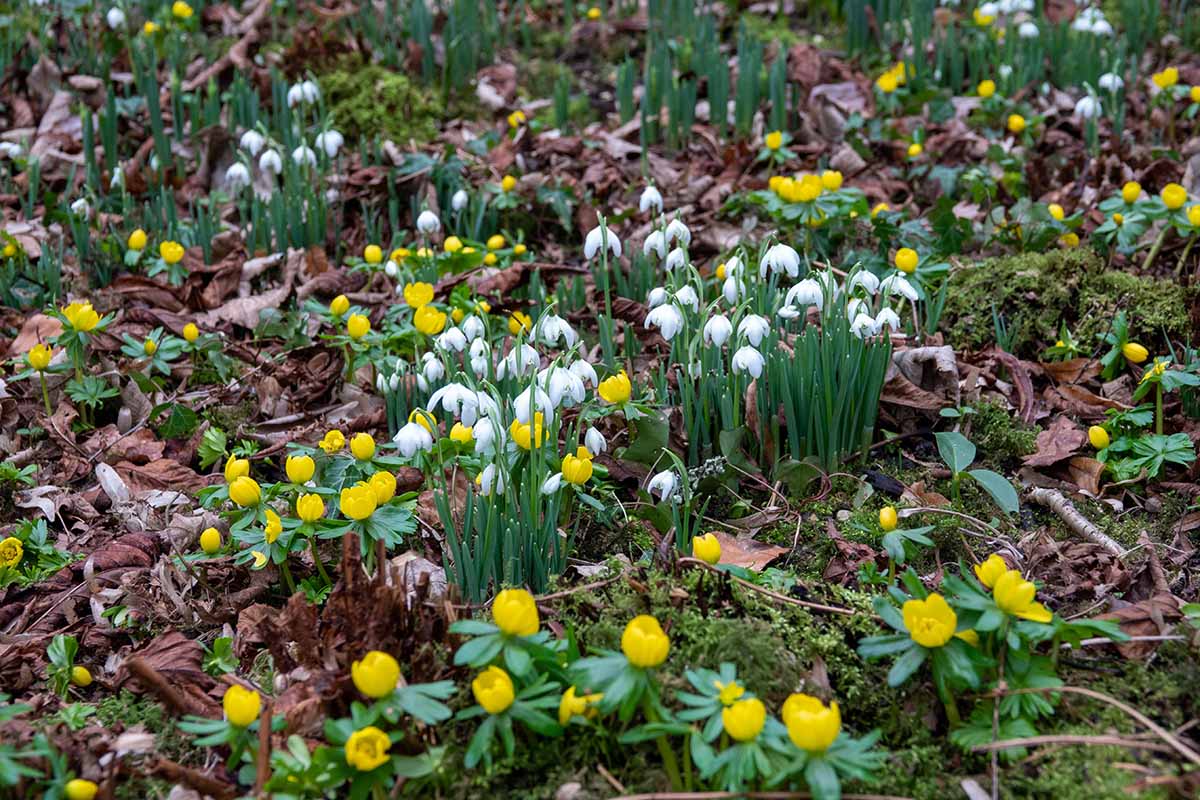
Hillsides shade to violet as grape hyacinths pop up among the grass.
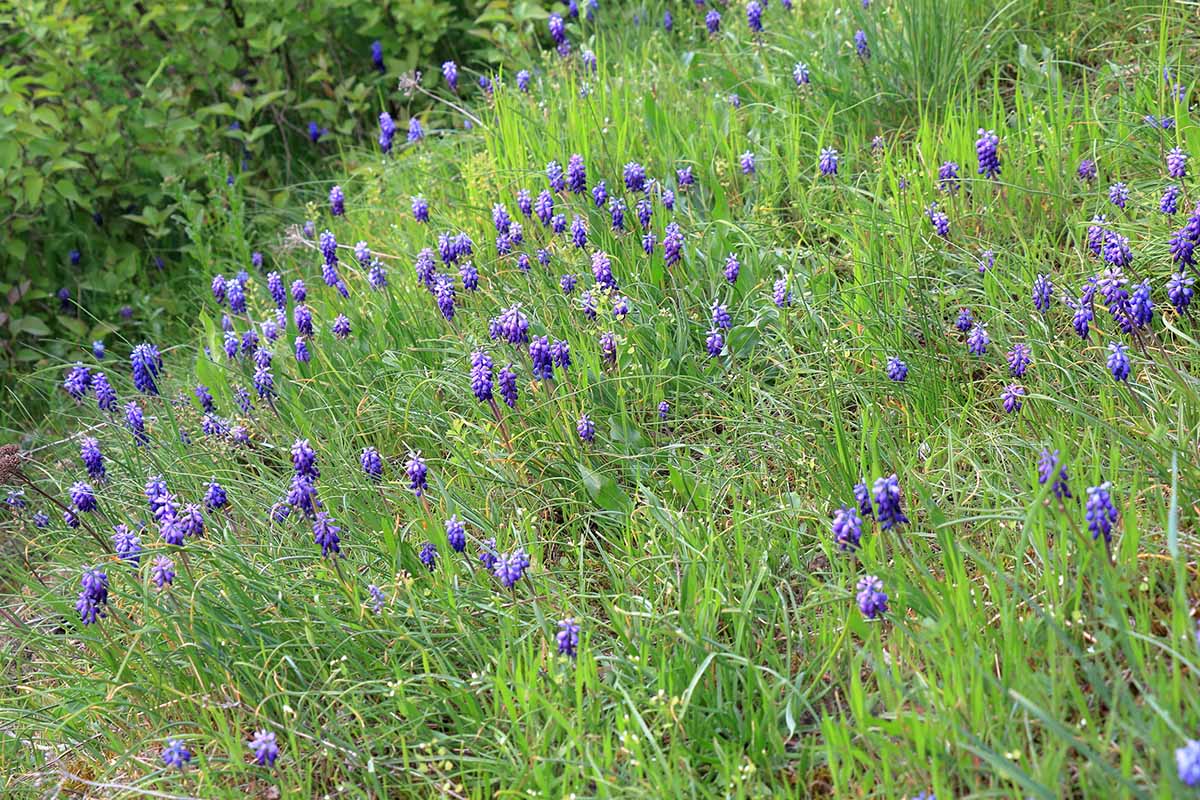
Sunny daffodils rise cheerily from beds of Siberian squill.

And some of my absolute favorites, checkered fritillaria, are a wonder of nature if ever there was one, with squares of contrasting colors adorning their petals.

The beauty is in the chaos – the riot of color renewing spring’s promise to return at winter’s end.
Best Bulbs for Naturalizing
Winter aconite, snowdrops, grape hyacinths, daffodils, Siberian squill, and fritillaria are spring-flowering bulbs that readily naturalize.
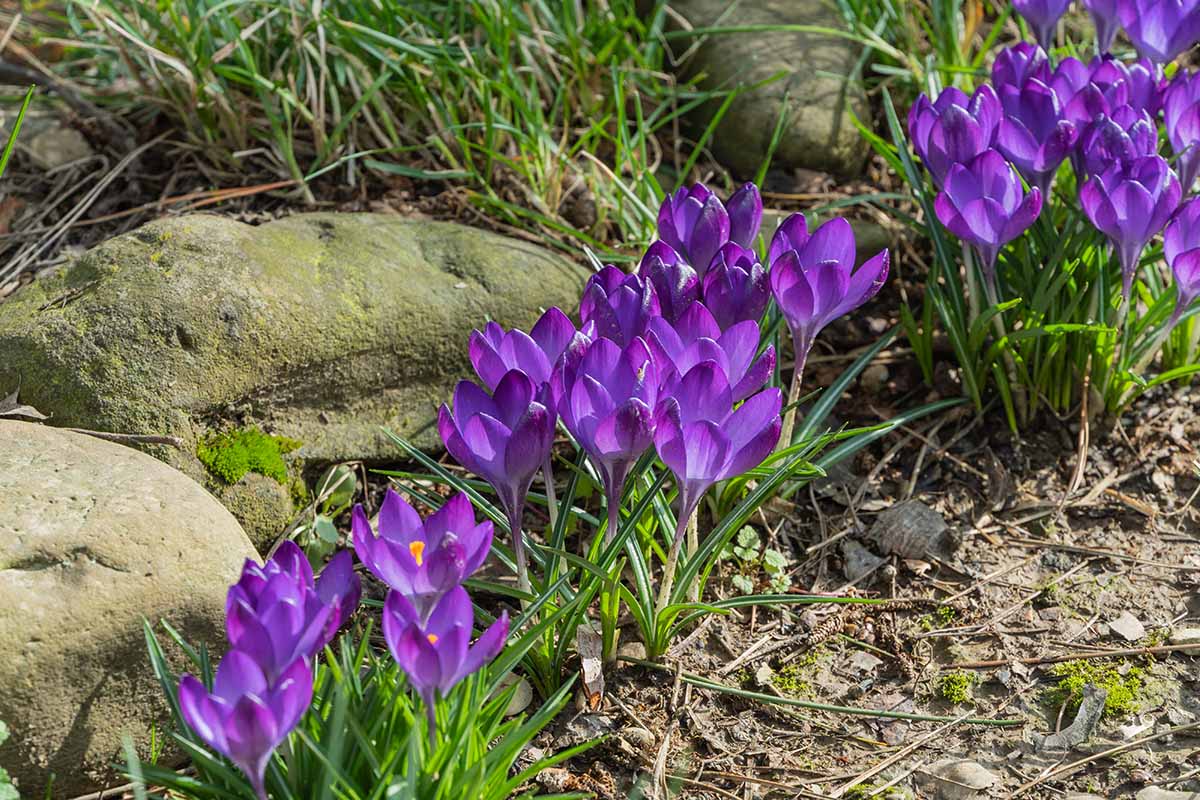
Others are:
- English Bluebells
- Crocuses
- Dwarf Woodland Irises
- Glory of the Snow
- Wood Anemones
Under ideal conditions, naturalizing bulbs produce “offsets” that spread through the soil. In addition, dry flower heads disperse seeds that also serve to propagate new flora.
When shopping, choosing varieties billed as “naturalizing” is helpful because they are aggressive growers and producers of offsets.
Random Placement
Sowing randomly instead of in organized rows is fun and lets you exercise your creativity.
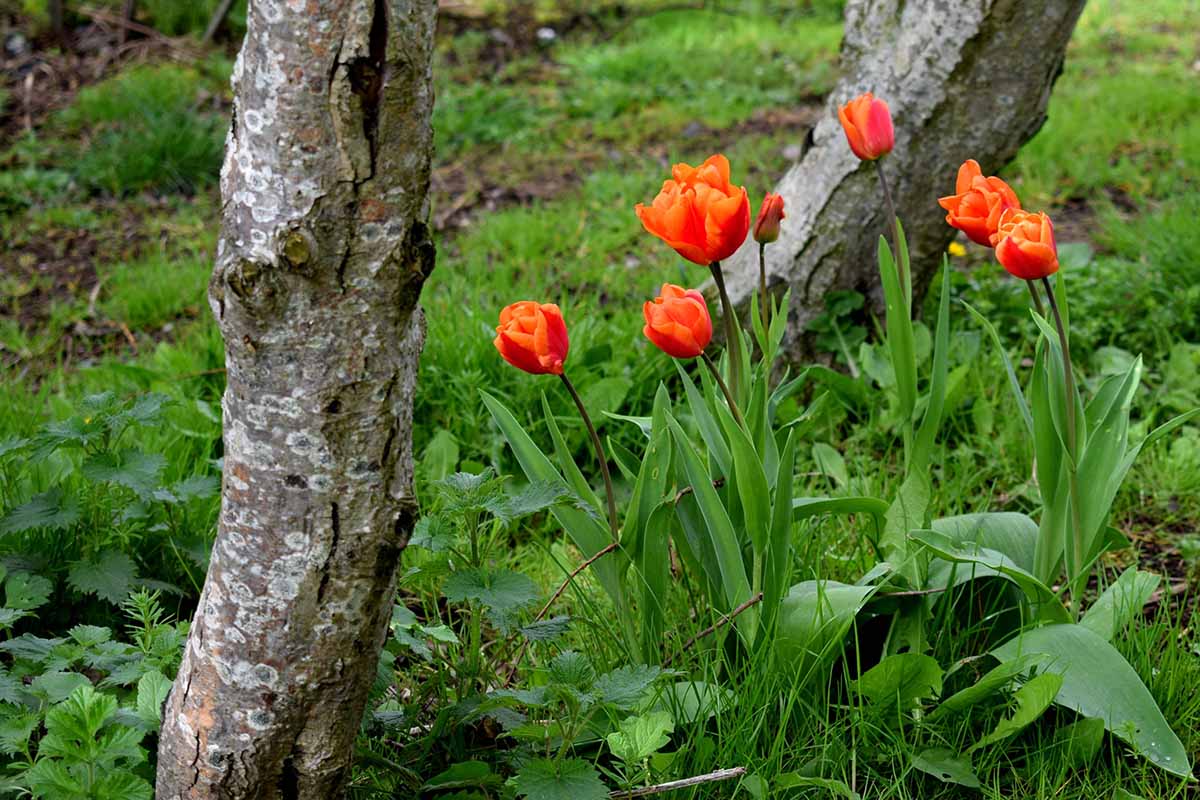
One of my gardening friends likes to tuck flowers in unexpected places as surprises for visitors who enjoy the wooded paths in her outdoor living space.
A clump of bright red tulips greets walkers as they round a tree-lined bend.
You can divide bulbs in early spring as needed to keep a small patch with great surprise appeal or allow a random planting to grow into a substantial drift.
Dedicated Drifts
If you have property to devote to flora that can spread informally, you can achieve a dense carpet of color over time. Start with a few varieties and let nature take its course.
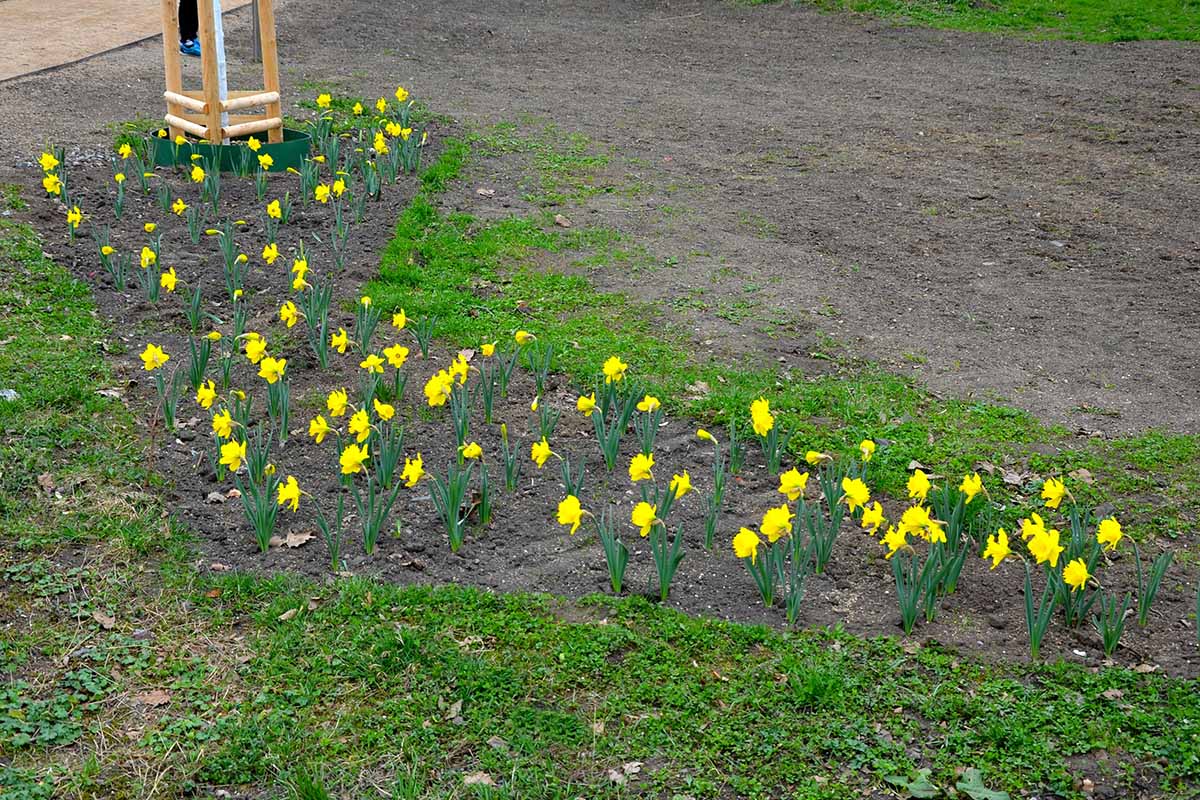
Years ago, my neighbor sowed a few crocuses in a patch of lawn near her driveway. Today, the effect is a stunning expanse of lavender.
Another naturalizing approach is to create a designated expanse with an irregular shape, as nature might design. Once the soil is free of debris, grass, and weeds, sow what you like.
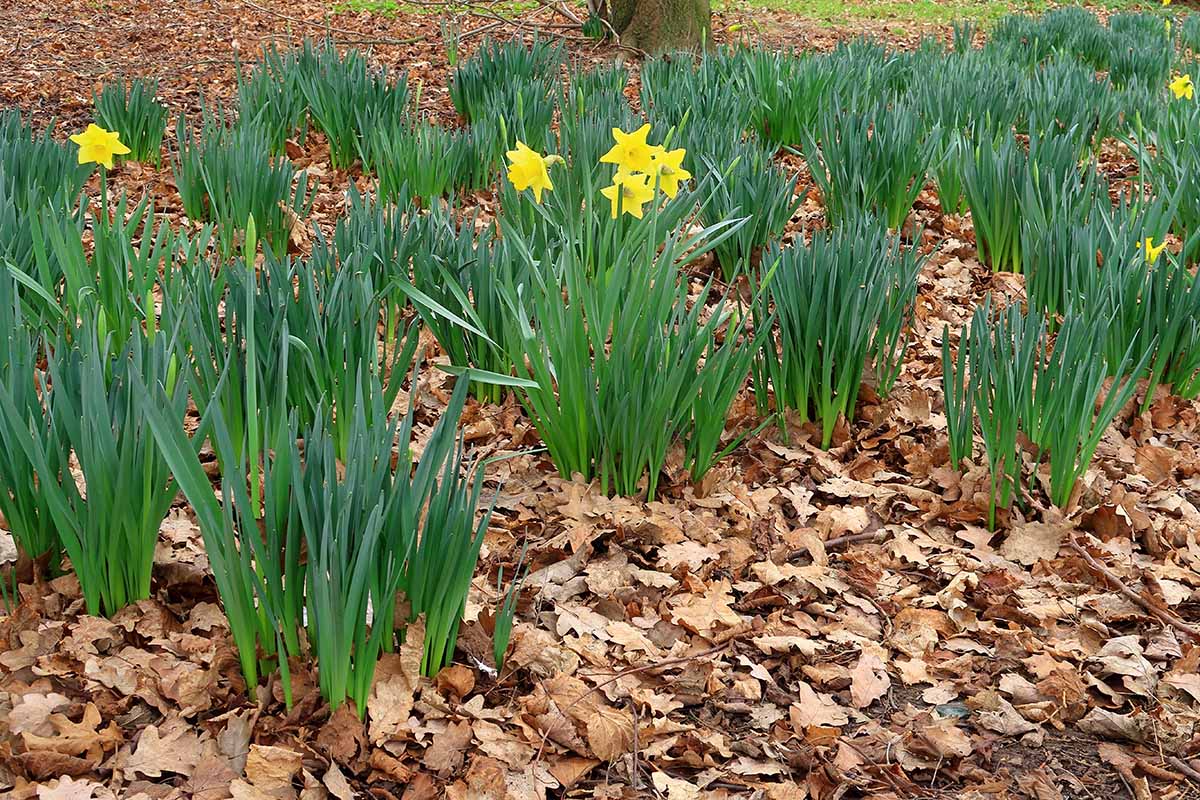
Add to the plot annually or let the clumps multiply and merge on their own. Use mulch to suppress unwanted growth.
A drift may contain similar or different flora. We’ll talk about this shortly.
Beneficial Placements
When selecting a location for sowing, consider “trouble” spots like hills prone to erosion.
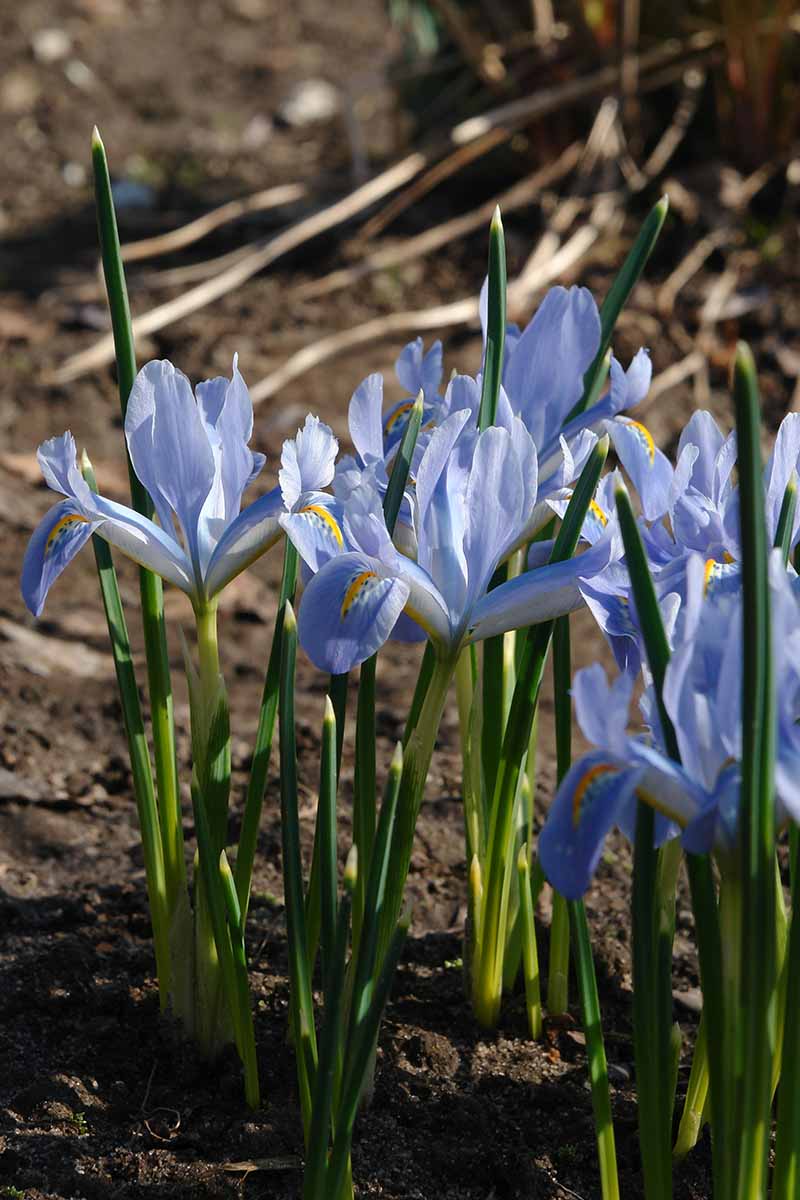
Sowing bulbs helps to keep soil from washing away because as they multiply, the roots take a firm hold of the ground.
Wet areas, like stream beds, are suitable for growing moisture-loving species like dwarf woodland irises and can turn a bare muddy place into one of flowering beauty.
In addition, some people sow bulbs among their fruit trees to attract early pollinators and support biodiversity.
Tips for Sowing
Wherever you choose to sow spring bulbs, the time to do so is in early fall.
Prepare the soil by working it to a depth of 12 inches until it has a crumbly consistency. Remove all rocks and debris.
Add compost as needed to enrich poor soil, phosphorus-rich bone meal, and a well-balanced 10-10-10 NPK fertilizer. The folks at the University of Illinois Extension recommend five tablespoons of fertilizer and 2 cups of bone meal for every 10 square feet.
The rule of thumb here is to sow at a depth two to three times the bulb diameter. Planting too shallowly may result in bulbs “heaving” or rising out of the soil and dying during repeated episodes of winter freezing and thawing.
Use a hand trowel and a ruler, or a tool like this one – the Garden Guru Seed Planting Shovel Trowel Transplanter Widger is a mouthful to say, and it does all the jobs it promises.

Garden Guru Seed Planting Shovel Trowel Transplanter Widger
Made of sturdy polished stainless steel, it features a comfortable ergonomic handle and markings from half an inch to six inches. Overall dimensions are nine by five by three inches.
The Garden Guru Seed Planting Shovel Trowel Transplanter Widger is available via Amazon.
In addition to sowing at the appropriate depth, it’s important to space generously to avoid overcrowding. Four to six inches apart is adequate for larger species, like daffodils and tulips. And for smaller ones, like crocuses, fritillaria, and Siberian squills, two to four inches is suitable.
Deciduous trees, like maples and oaks, are leafless or sparsely leafed in the spring, allowing sunlight to reach the ground. So, some places that are shady in the summer are perfect for sun-loving spring bulbs.
Also, while it’s nice to have a pop of color beside a tree, avoid planting bulbs near trunks with visible roots on the soil surface. The root bed is susceptible to damage if the soil is disturbed.
Variation or Uniformity
The choice is yours when it comes to flower selection.
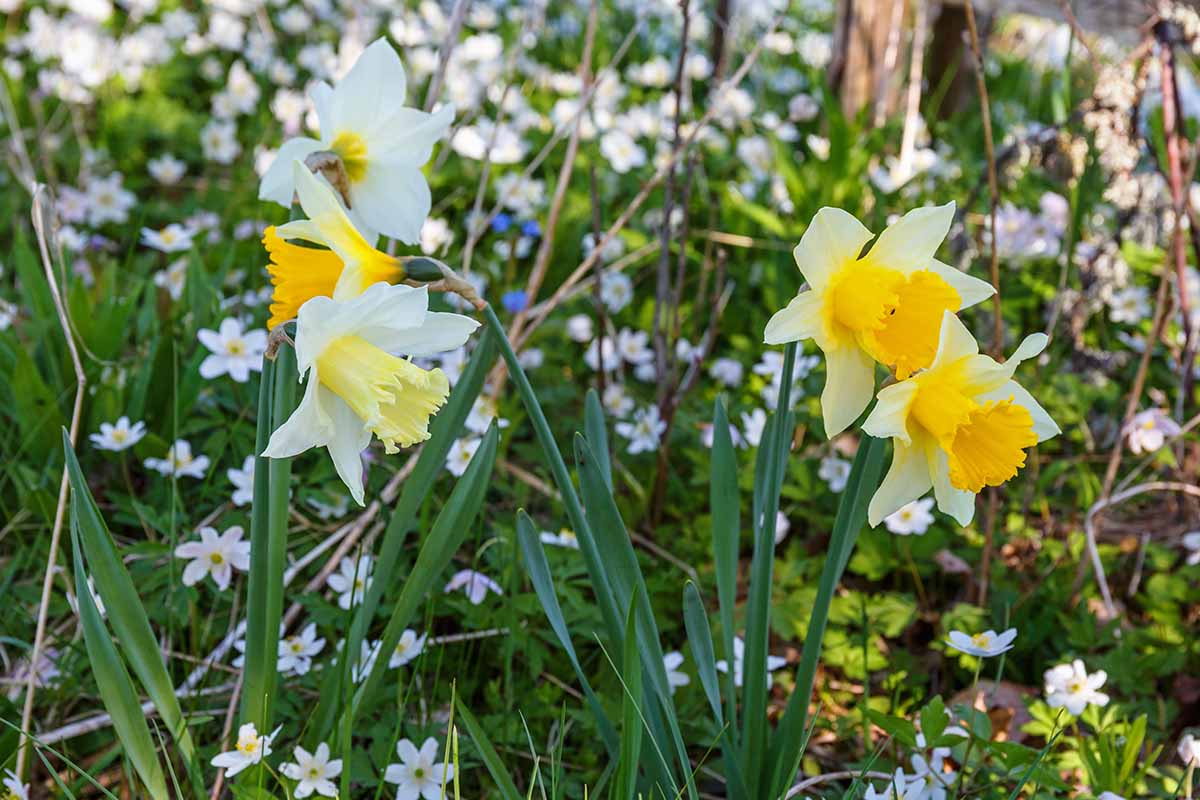
Consider characteristics like:
- Bloom time
- Color
- Cultural Requirements
- Form
- Height
Flowers that bloom at different times prolong the spring growing season for maximum visual interest.
As for color, you can display a single color scheme, opposites like orange fritillaries and blue woodland irises, or a mixed batch of red tulips, yellow daffodils, and violet grape hyacinths.
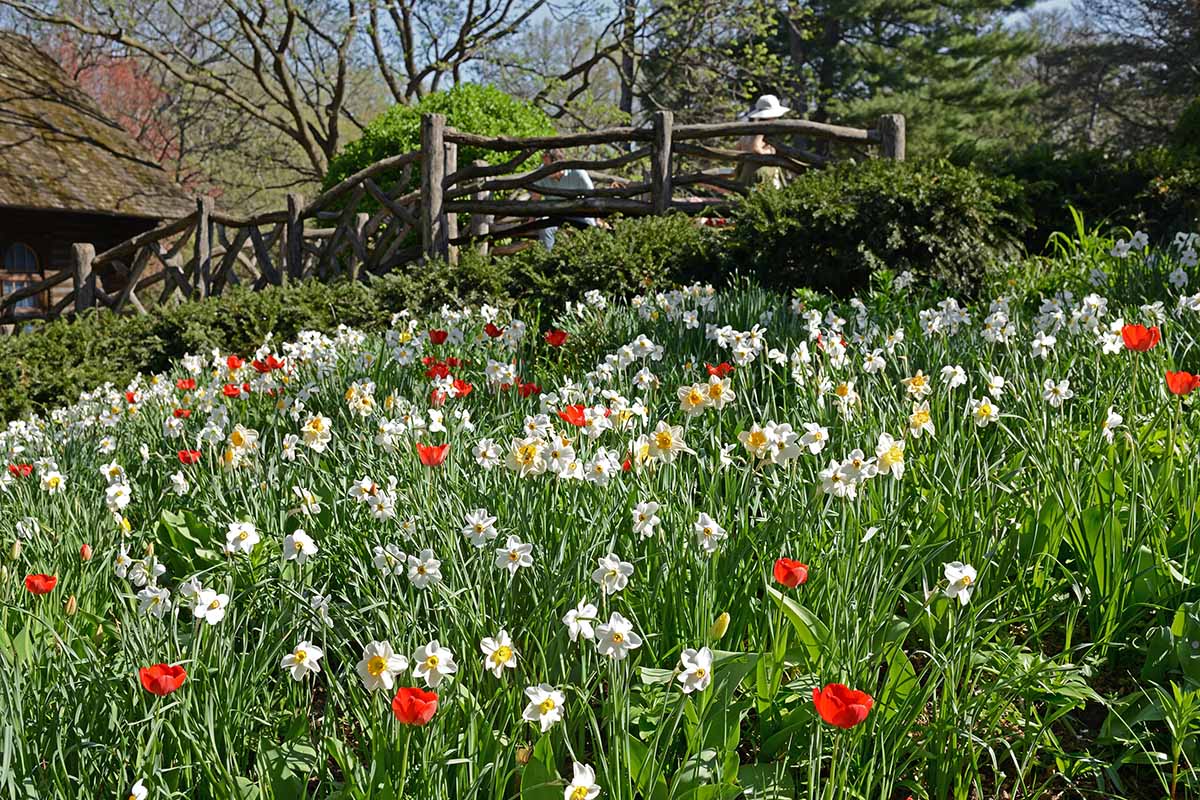
Your chosen varieties should have the same light, moisture, and soil needs. You’ll find this information in our growing guides and on plant tags and labels.
You can vary the form of the flowers, from the outward-facing, large trumpets of daffodils to the conical clusters of bell-like grape hyacinths, and upturned, cuplike petals of tulips.

And finally, varying heights creates depth, while stems of a single height create a smooth, carpet-like effect.
Varieties to Consider
There are many bulb varieties available. Here are three to whet your appetite:
Checkered Fritillaria
Also known as snakeshead fritillaria, checkered fritillaria, F. meleagris, prefers full sun to part shade and medium moisture. It’s hardy in Zones 3 to 8.
Red-violet and white checked flowers bloom from late winter to mid-spring at a height of approximately 12 inches.
Checkered fritillaria is available from Burpee in packages of 25.
Harmony Dwarf Iris
Iris reticulata ‘Harmony’, is a dwarf variety with deep blue flowers and a signature yellow swish.
This late winter to early spring bloomer is suited to Zones 5 to 9. It prefers full sun to part shade and medium moisture. It reaches a mature height of four to six inches.
‘Harmony’ dwarf iris is available from Burpee.
Yellow Mammoth Crocus
Crocus vernus ‘Yellow Mammoth’ is one of the largest crocus varieties at a height of four to six inches. Its bold yellow hue is a delight in early spring.
This cultivar requires full sun to part shade and medium moisture. It’s suited to Zones 3 to 8.
‘Yellow Mammoth’ crocus is available from Burpee.
Ensuring Longevity
To ensure that your flowers keep coming back, resist the urge to prune or mow down decaying post-bloom foliage.
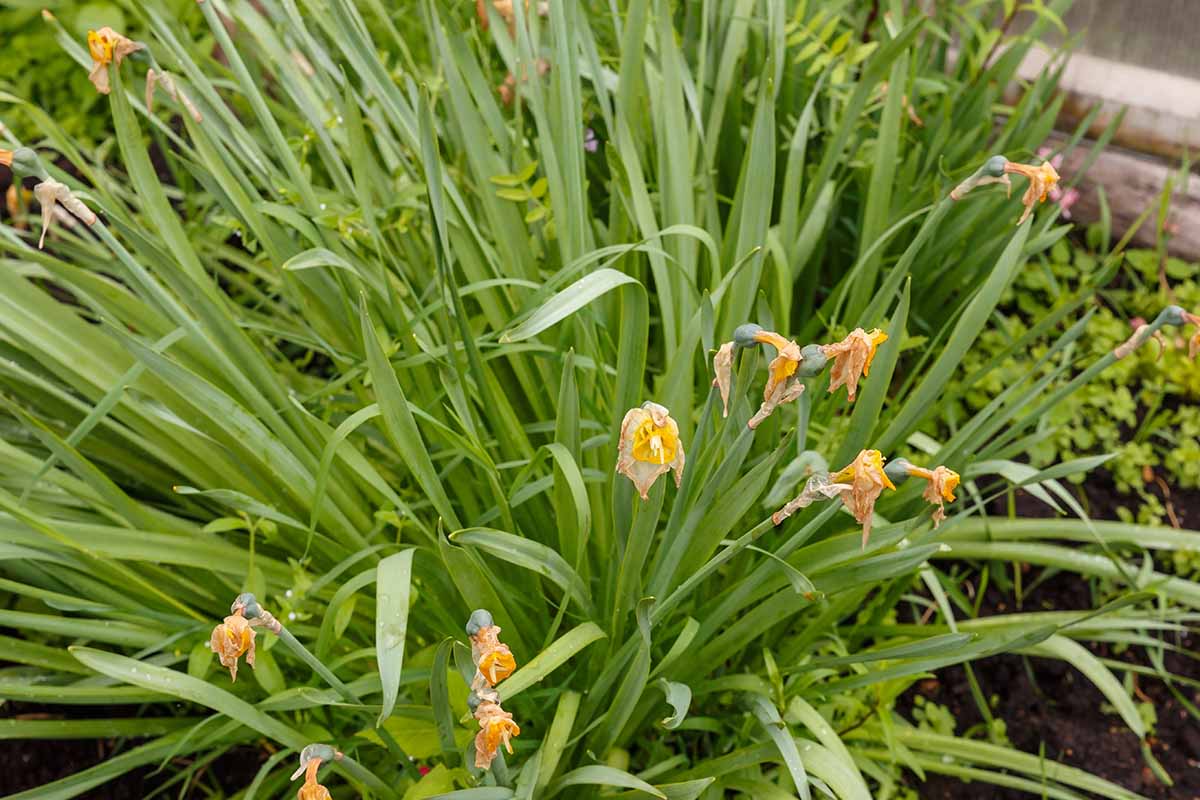
The leaves must remain in place to feed the bulbs, so they can store the energy needed to bloom again the following year. Well before summer begins, the spring foliage will be gone.
If you must do some tidying up, it’s okay to clip off spent flower stems.
On the one hand, you’ll redirect energy to the bulb, but note that on the other hand, you’ll prevent seed setting and dispersal. And while it takes years for seeds to turn into viable bulbs, they contribute to the overall naturalization process.
If the unsightly greens disturb your sense of beauty, you can interplant sun-loving bulbs in wildflower gardens and meadows full of summer-blooming plants.
You can pair shade-lovers with other early shade plants, like leafy hellebores and lungworts.
Interplanting helps to camouflage the fading spring foliage.
Keep this in mind if you plant crocuses in your lawn. If you mow the foliage down before it withers, the blossoms may not return. If you select an early-blooming species, like the snow crocus, Crocus chrysanthus, it will likely wither before or as lawn care begins.
As If Planted by Nature
Naturalizing spring bulbs gives them room to roam to achieve a pattern of growth you might find in nature: irregular and unpredictable.
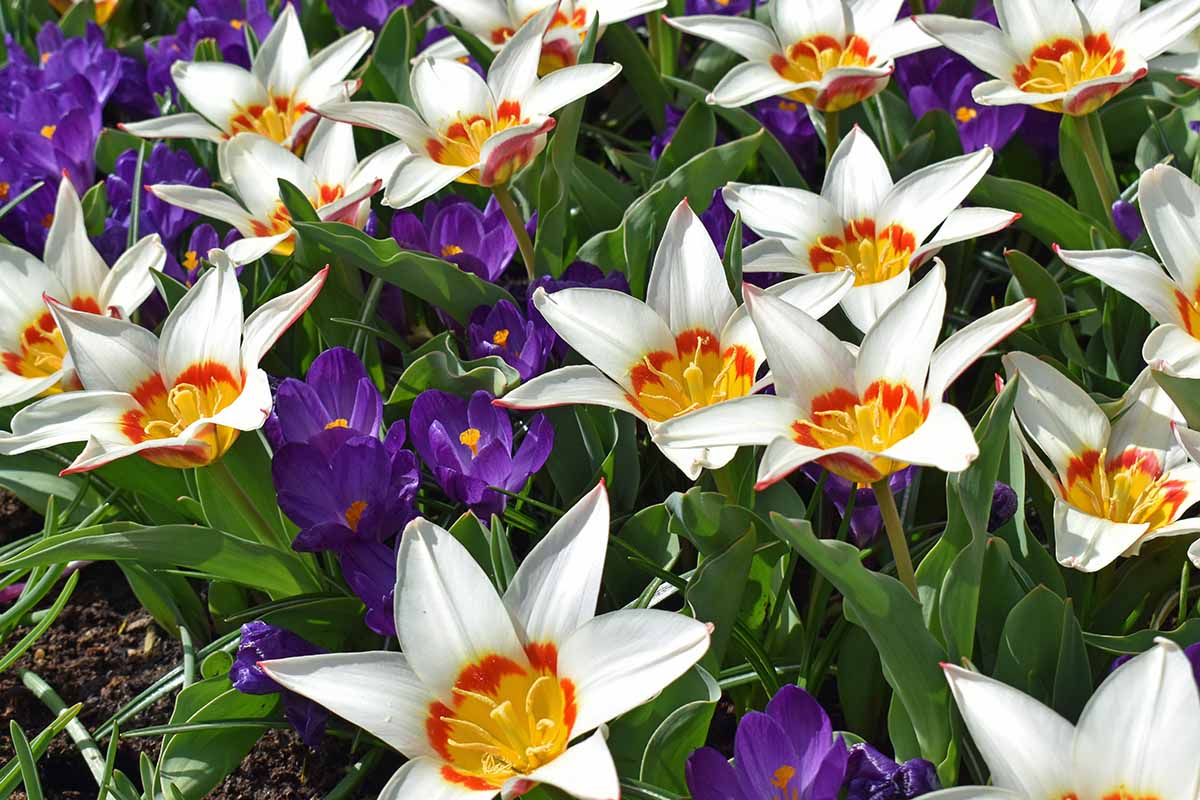
Some types that naturalize readily are:
- English Bluebells
- Crocuses
- Daffodils
- Dwarf Woodland Irises
- Fritillaria
- Glory of the Snow
- Grape Hyacinths
- Siberian Squill
- Snowdrops
- Tulips
- Winter Aconite
- Wood Anemones
Read descriptions of the plants you like and choose those that spread readily in the landscape. Good garden companions have similar cultural requirements and may be of various sizes, shapes, and colors.
Cast your artistic eye over your outdoor living space. Is there an expanse begging to burst into springtime bloom with mass-planted bulbs?
Or are there spots here and there that might sport a clump or two of your favorite blooms?
Add naturalizing to your gardening toolkit. It’s a skill you’re ready to use.
Do you naturalize bulbs? Tell us about them in the comments section below.
If you enjoyed this article and are ready to start naturalizing flower bulbs, we recommend the following guides next:
